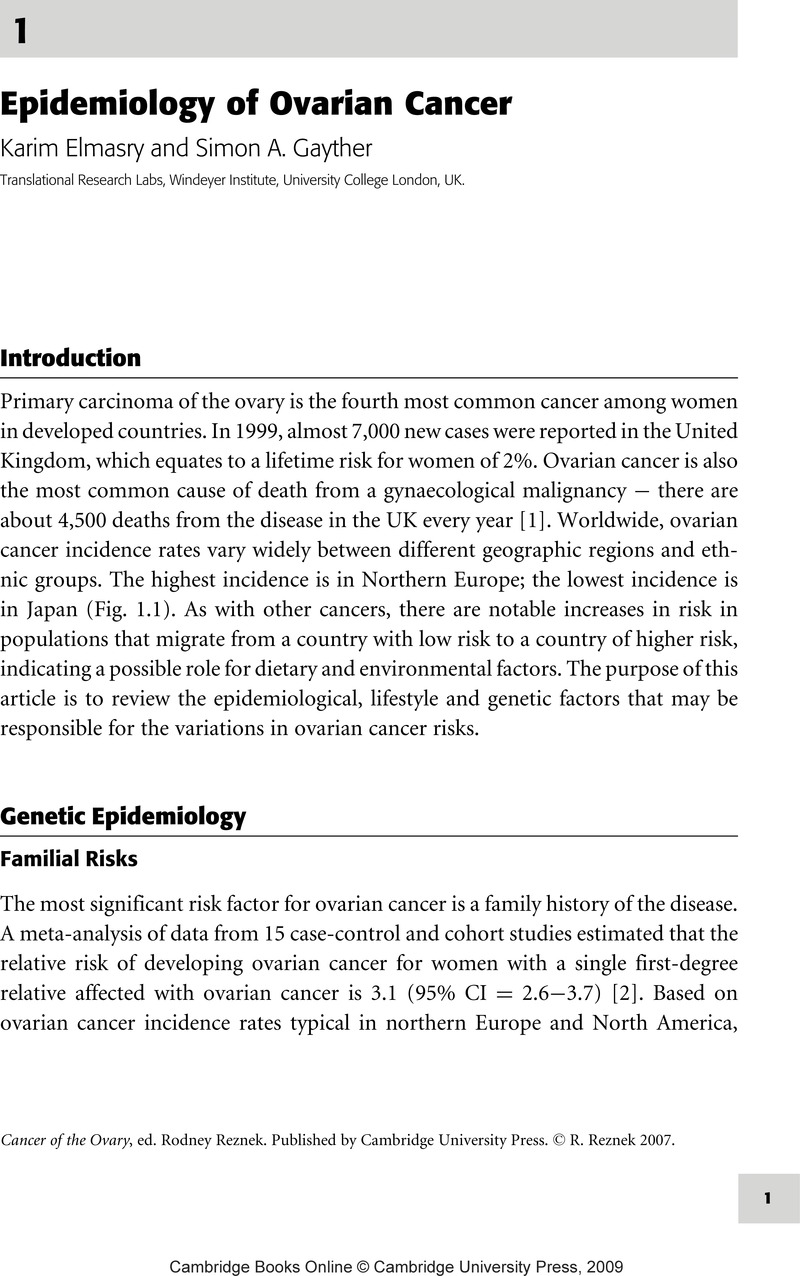Book contents
- Frontmatter
- Contents
- Contributors
- Series Foreword
- Preface to Cancer of the Ovary
- 1 Epidemiology of Ovarian Cancer
- 2 The Pathological Features of Ovarian Neoplasia
- 3 Ovarian Cancer Screening
- 4 Surgical Management of Patients with Epithelial Ovarian Cancer
- 5 Medical Treatment of Ovarian Carcinoma
- 6 Ultrasound in Ovarian Carcinoma
- 7 MR Imaging in Ovarian Cancer
- 8 CT in Carcinoma of the Ovary
- 9 PET and PET/CT in Ovarian Cancer
- Index
- Plate section
- References
1 - Epidemiology of Ovarian Cancer
Published online by Cambridge University Press: 11 September 2009
- Frontmatter
- Contents
- Contributors
- Series Foreword
- Preface to Cancer of the Ovary
- 1 Epidemiology of Ovarian Cancer
- 2 The Pathological Features of Ovarian Neoplasia
- 3 Ovarian Cancer Screening
- 4 Surgical Management of Patients with Epithelial Ovarian Cancer
- 5 Medical Treatment of Ovarian Carcinoma
- 6 Ultrasound in Ovarian Carcinoma
- 7 MR Imaging in Ovarian Cancer
- 8 CT in Carcinoma of the Ovary
- 9 PET and PET/CT in Ovarian Cancer
- Index
- Plate section
- References
Summary

- Type
- Chapter
- Information
- Cancer of the Ovary , pp. 1 - 19Publisher: Cambridge University PressPrint publication year: 2006



